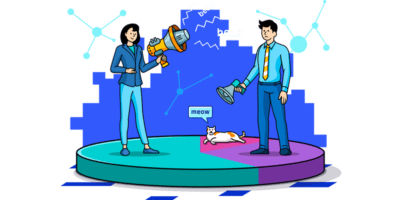On the one hand, marketing channels allow you to promote your business so that you can get more customers. On the other, they act as places where people can find you, learn more, and reach out to you.

Marketing channels are of fundamental importance to any business because they enable communication — without that, there can be no sales.
The most valuable brands in the world use multiple channels at the same time. This article will help you follow their strategy and pick a mix of channels that fit your business best.
From a high-level view, the landscape of marketing channels can be divided into a few groups. Some popular categorizations include direct/indirect, free/paid, and traditional/digital.
Arguably, the most practical way of thinking about marketing channels is in terms of owned, earned, and paid media. It makes you think in terms of costs, balancing different channels and long-term access to your audience without the need to pay for every click to your site.
| Channel type | Summary | Examples |
|---|---|---|
| Owned media | These are the channels you control, and you don’t need to pay a third party each time you want to reach your audience. They’re good for keeping your audience close so that you can contact them directly and frequently. | Email, social media, podcasts. |
| Earned media | Any mentions of you on other sites or platforms that you haven’t paid for. You have little to no control over them, but they typically enjoy higher credibility than other channels and can offer a fast route to broad exposure. | Word-of-mouth, press mentions, rankings, unpaid influencer endorsement. |
| Paid media | You pay a third party to get access to the audience. These channels offer fast results and are typically easy to work with and scale. However, their effectiveness varies significantly depending on your product and audience. | Any kind of advertising, influencer marketing, affiliate marketing. |
Looking for a place to start? It helps to look at what your competitors are doing first and add channels in stages.
Study your competitors
Checking out your direct competitors is a smart move because they’re after the same audience as you. And if they’ve been around for a while, they probably figured out the best channels to connect with that crowd.
- Find your competitors on social media and see how often they publish and what engagement (likes, comments, retweets, views, etc.) they get.
- Subscribe to all their content to see how and where they publish (pay attention to content formats, publishing cadence, the choice of topics, and if and how they offer special deals).
When it comes to competitive analysis, there are tools that can save you time and guesswork. For example, you can use official ad libraries to find out where (and how) they advertise. Or use our free traffic checker to see how much traffic your competitors get from the organic search channel and whether it has been growing.

Build a foundation and branch out
Eventually, you will likely use multiple channels or even all of them. After all, more channels mean more ways to reach your audience. But until you get to that point, you need channels that will let you grow despite limited budget and staff.
A solution to that is moving in stages. You start by picking a few fundamental channels to fuel your growth, then experiment with new ones and double down on the ones that work.
You can see this pattern all around, and it happened at our company (Ahrefs), too. Some of our core channels, video marketing, and organic search, started really small, and there are channels like influencer marketing and sponsorships that we added to the mix later on.
So, for example, your channel foundation can comprise:
- Social media
- Organic search
- Email marketing
- Digital advertising
- Occasional use of events (speaking or small sponsor packages on more affordable conferences)
This set of channels is something I’ve seen many businesses start with. What makes them a good choice in the “early days” is they’re relatively easy to work with, and they’re affordable and scalable.
But if five channels sound too overwhelming, a good idea may be to focus on social media first. It has tremendous potential reach, it’s free but can be boosted with a small ad budget, it works with all content formats, and finally, it’s a two-way communication channel. We’ll talk more about that channel in a bit.
These are the key options when choosing marketing channels for your business — learn what they’re about.
Organic search refers to the non-paid search results from a search engine.

Organic search is one of the pillars of the entire internet. In all, 68% of online experiences begin with a search engine (BrightEdge). In other words, people use search engines a lot, and some of them may be looking for a product or service like yours.
The practice of optimizing webpages to increase traffic and visibility in this channel is called search engine optimization (SEO), and one of the most effective ways to keep your organic traffic growing is by blogging.
Example
At Ahrefs, we write blog posts about topics relevant to our product. At the same time, we target topics that offer search traffic potential and are within our capability to rank.
We use Keywords Explorer to find good topics for our blog. The SEO metrics show us how much traffic we are potentially looking at (TP) and how hard it can be to rank (KD). Here are some keyword examples for which we wrote SEO content and their metrics.
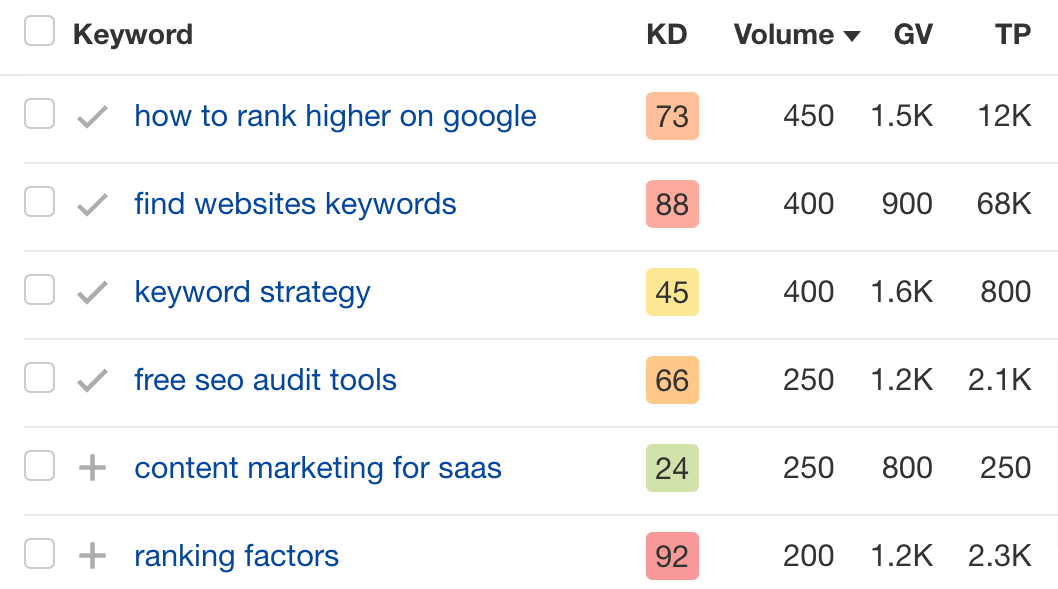
This way, when people Google things related to SEO and marketing, we can naturally feature our product.

In the organic search channel, each piece of content that ends up ranking adds up to your overall organic traffic. So, the more high-ranking content you have, the more potential customers visit your website. Plus, evergreen topics can generate traffic for years after publication.

Pros and cons
| Pros | Cons |
|---|---|
| Continuous traffic with no ad spend. | Ranking high in search engines takes time. |
| Compounding effects. | Lots of uncertainty (e.g., fluctuating rankings, search algorithm updates). |
| SEO content can influence the entire marketing funnel. | |
| Relies more on quality and creativity than budget. |
In marketing, this refers to using social media platforms to connect with both current and potential customers through content and conversations.
Social media is not just Facebook, Twitter, or LinkedIn. Messaging-only apps like Discord, Slack, and WhatsApp also fall into the same channel category.
Do social media users “consume” content from brands? Quite surprisingly, 90% of people on Instagram follow a business (Instagram).
Example
Social media is complex. It’s a mix of product marketing, PR, and customer support. Trying to summarize it is like trying to summarize all conversations in the world.
Each brand on social media tends to develop its own voice while publishing a balanced mix of product marketing, conversations, entertainment, and company news.
And so while some brands will be super serious and “business-oriented,” others will try to win hearts with candor and authenticity.
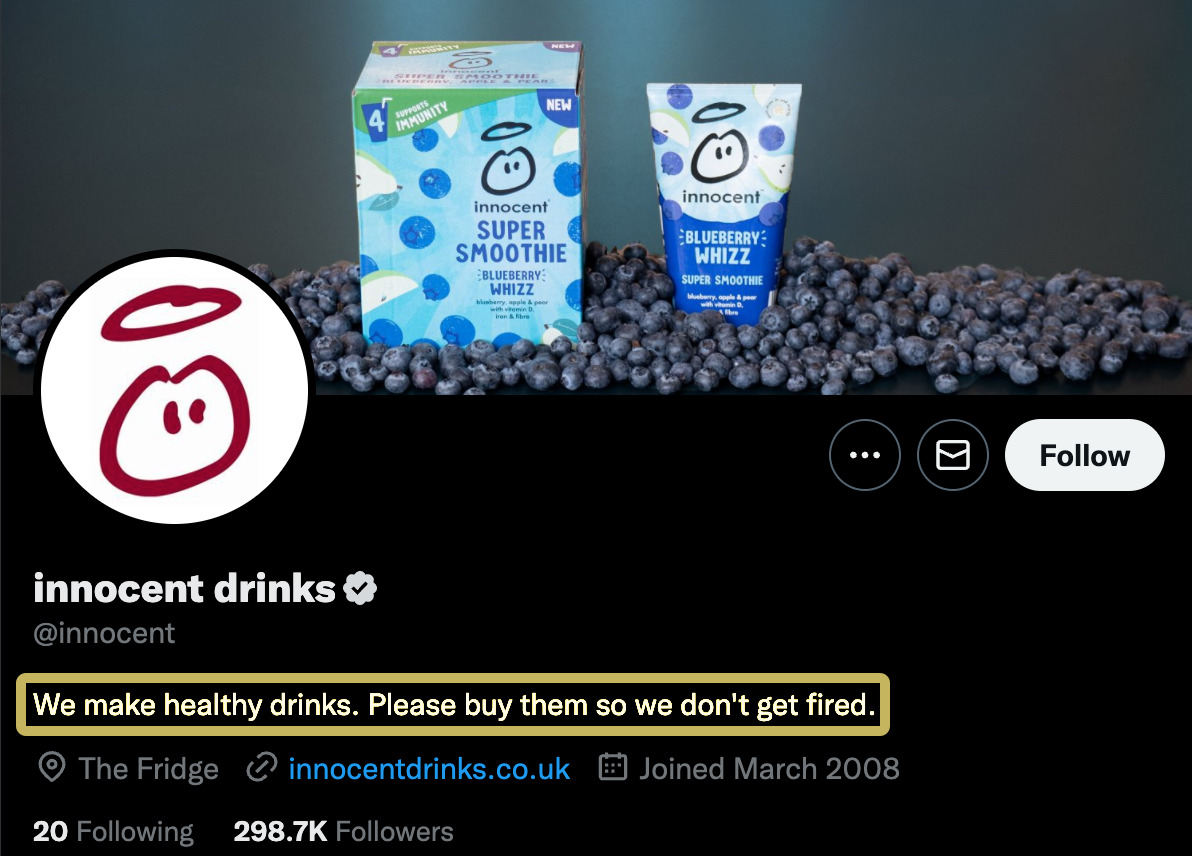
Furthermore, this is an effective use of social media:
Advertising products also works:
Demonstrating value is something fans want to see from their favorite brands:
Last but not least, one of the best ways to use social media for businesses… user-generated content:
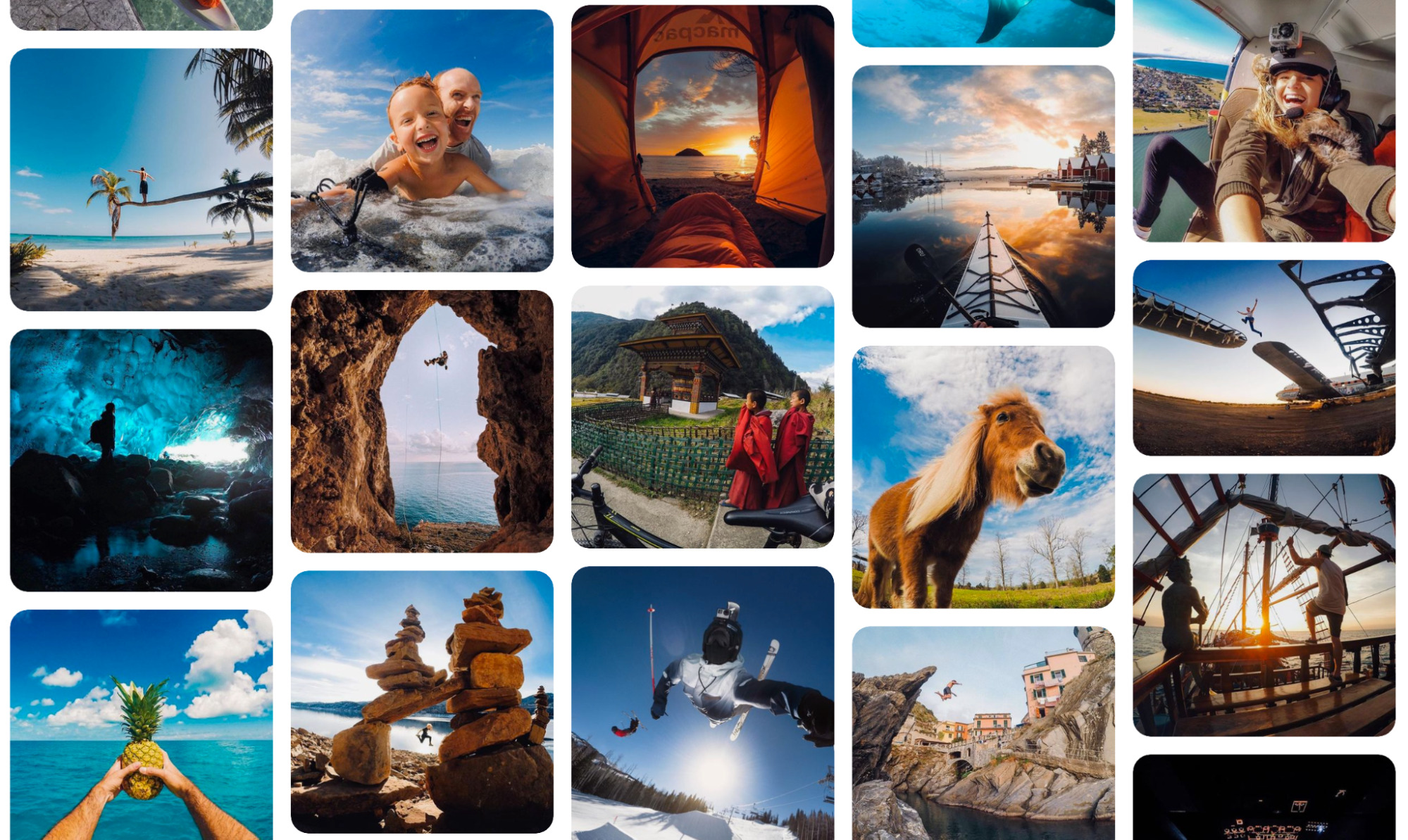
Pros and cons
| Pros | Cons |
|---|---|
| Allows you to interact directly with your audience. | Makes you vulnerable to negative comments and “trolls.” |
| Taps into massive audiences gathered around social media platforms. | Depending on the social media platform, keeping consistent results may become resource-heavy. |
| Enhances customer support. | Decreasing organic reach on popular social media platforms. |
| Allows you to run highly targeted ad campaigns. | |
| Can induce brand loyalty. |
This marketing channel allows you to distribute content and ads in a video format.
Does video marketing work? These stats seem to speak for themselves:
- 70% of viewers bought from a brand after seeing it on YouTube (Google).
- 96% of people have watched an explainer video to learn more about a product or service (Wyzowl).
Basically, video marketing is about two things:
- Taking advantage of a highly engaging content format. Video can make such a difference compared to other formats that focusing on this kind of content has become a distinct type of marketing.
Taking advantage of video-first platforms like YouTube and TikTok. These platforms have such a big audience that it makes sense for many brands to create videos just to be there. Plus, content can reach thousands of people without spending anything on ads.
Example
The great thing about video is that platforms like YouTube have their own distribution mechanisms, which can bring your content to thousands of people for free (of course, you can boost that with some budget too).
We use this channel on a regular basis, and we’ve even made a video on how to rank videos #1:
Moreover, you can repurpose videos and create “packages”—like a full-blown Academy. It also works the other way around: start with a course and share it or parts of it on YouTube.
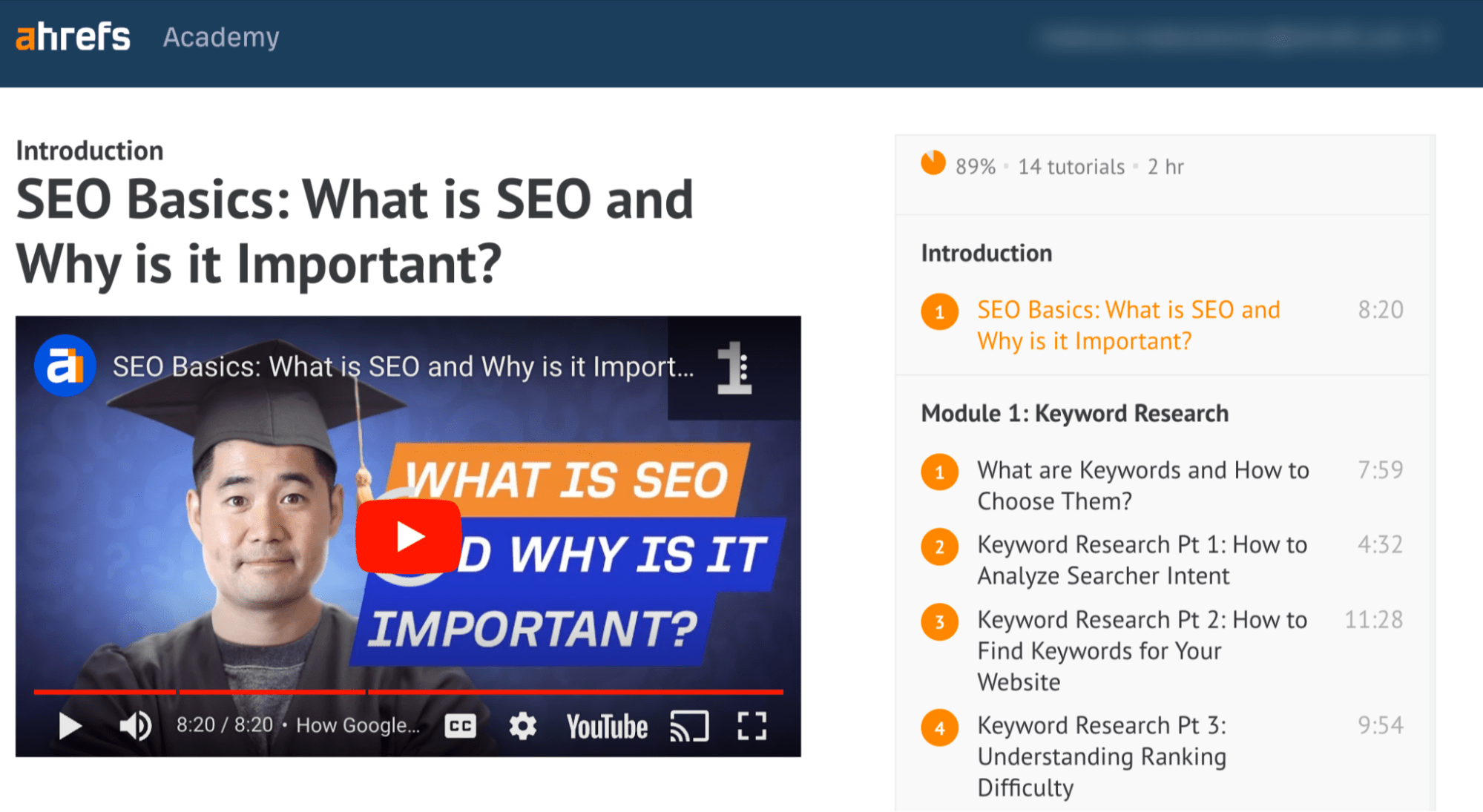
Pros and cons
| Pros | Cons |
|---|---|
| A picture paints a thousand words. If your product is easier to show than explain, this channel is the way to go. | Can be quite resource-heavy (time, people, money). |
| Can be more engaging than written content; video is great at grabbing attention. | Harder to update than written content. |
| Can be repurposed and distributed on various platforms. |
Advertising is about paying media outlets that have access to your audience to display your message near or instead of regular content.
Digital advertising is the same idea transplanted to the internet (aka paid traffic or paid media).
Ads are typically used to directly promote a product or service but they can be effective in promoting content, too. In fact, most B2B and B2C marketers use ads this way (67% and 78%, respectively).
Example
Why pay for ads when there are free traffic channels like search and social media? Especially when ads have such a bad reputation?
It’s all about the creative you use and the targeting.
Some ads can be simply irresistible because they dominate the space, such as this “Stranger Things” Ad:

Some are genuinely entertaining, such as the Super Bowl half-time commercials.
Some ads are just so well-targeted that it makes you wonder whether they’re still legal.
And unlike free traffic channels, you can simply outspend the competition instead of building authority, backlinks, or a following.
Pros and cons
| Pros | Cons |
|---|---|
| Fast way to get results. | Suffers from syndromes like ad fatigue and banner blindness. |
| Allows for precise targeting. | Increasing use of ad blocks and default third-party cookies blocking by web browsers. |
| Can be used to promote anything: product, content, or the brand itself. | Bad ads can compromise your brand. |
| Easy to measure, control, and scale. | |
| Wide range of ad formats and advertising platforms. |
Email marketing is a way to send messages directly to the email inboxes of potential customers. These messages can encourage quick actions like redeeming a discount code or help build a lasting connection with your brand through content.
To communicate with your audience, you can create your own list of email addresses, for example by having people sign up for a newsletter, or you can pay to include your messages in someone else’s newsletter.
Example
Some brands use this channel solely to “seal the deal.” They spend so much on brand awareness and product marketing elsewhere that all they need is a nudge sent directly to an inbox (my inbox, in this example).
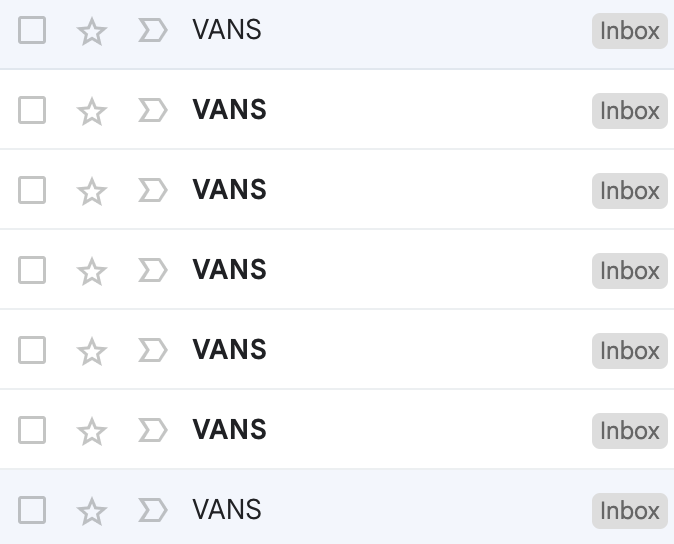
Brands we know little about will need more touch points and do more soft-selling beforehand. The conversation usually starts with signing up for a free resource, like in the example below.

Pros and cons
| Pros | Cons |
|---|---|
| Can be highly personalized and segmented. | Takes time to organically (and legally) build a quality email list. |
| Fast way to directly reach your collected audience. | If you overdo it, you can break email marketing legislation (GDPR, CAN-SPAM). |
| An affordable way to run lead nurturing and e-commerce campaigns. | It’s challenging to break through hundreds of other emails and get attention. |
| Easy to measure. |
Sponsorship in marketing involves providing financial or material support to an event, individual, or organization, in exchange for opportunities to advertise and promote its brand or products.
Specifically, it’s used for two kinds of goals: increasing brand awareness and shaping brand image (i.e., gaining customers’ trust).
Sponsorship works best if the cause/person you fund is something/someone that your target audience cares about — for example, an event attended by your audience.
Is sponsorship a popular way to do marketing? If you look at it globally, the spending from 2007 to 2018 was on a steady rise.
Most probably, the stats are inflated by big brands sponsoring sports. But small and medium brands can engage in sponsorships too, e.g., niche magazines, industry events, or influential content creators.
Example
Watch an FC Barcelona game, and you’ll see and hear “Spotify” a thousand times. The logo is literally on every player, and its home stadium’s name starts with “Spotify.”

Pros and cons
| Pros | Cons |
|---|---|
| Can greatly increase brand awareness in a short time. | Limited control. Risk of unwanted brand associations if you sponsor the wrong event or person. |
| Can raise your company’s profile. | ROI may be hard to measure. |
| Sometimes allows for precise targeting. | |
| An opportunity for personal engagement with your target audience and others in the industry. |
Conversational marketing refers to real-time conversations with potential and current customers through live chats, chatbots, messaging apps, and social media.
This channel steps away from the standard routine of navigating through several web pages for information or services. Instead, the user can simply ask for it.
What’s more, it seems to be effective:
- 79% of companies say that live chat has had positive results for customer loyalty, sales, and revenue (Kayako).
- 82% of companies that use AI conversational marketing solutions find them to be a valuable asset in their strategy (Drift).
Example
The way brands usually use chatbots (aka virtual assistants) is to:
- Answer basic and frequent questions.
- Qualify leads.
- Schedule a meeting with an agent.
- Promote specific content.
Here’s a sample from Drift:
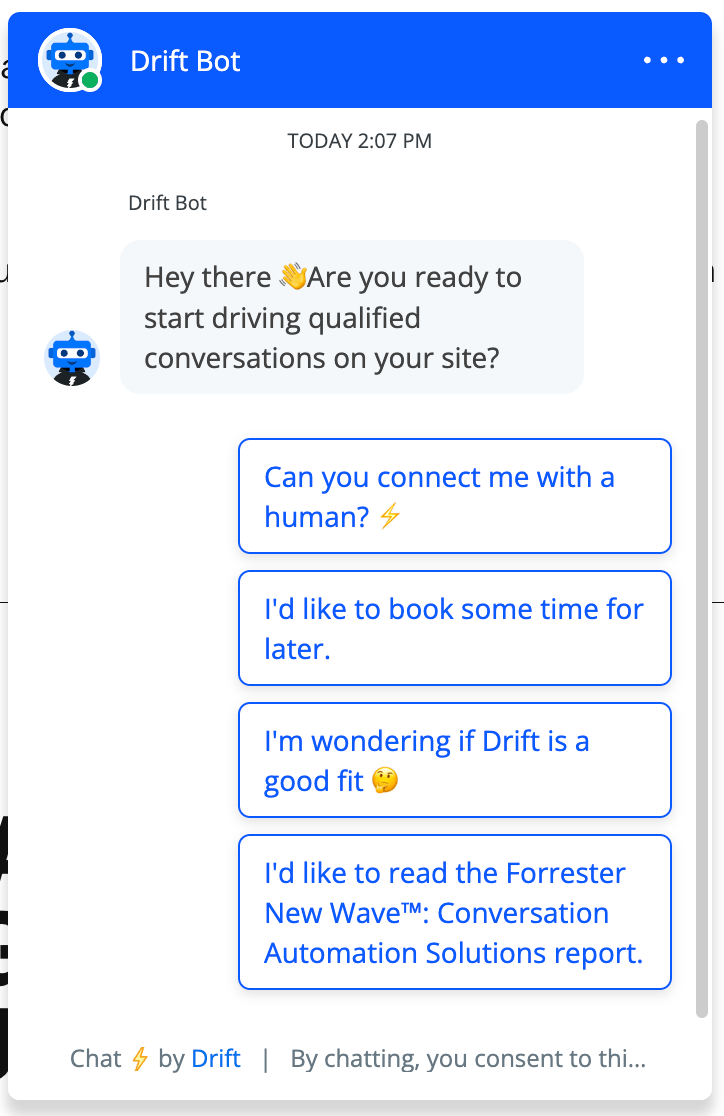
Pros and cons
| Pros | Cons |
|---|---|
| Chatbots can engage simultaneously with a limitless number of customers. | Bad conversation experiences can frustrate your prospects and compromise your brand. |
| More convenience for the customer. | Prepare to get all kinds of questions you weren’t necessarily prepared for. |
| More engaging than typical website visits. | |
| Can be used as a lead-generation tool. |
Word-of-mouth marketing (WoMM) is the process of influencing and encouraging natural discussions about a product, service, or company. In other words, it’s about giving people a reason to talk.
Is word of mouth effective?
Well, it’s probably one of the most effective marketing channels because people tend to trust other people more than brands. According to a study by BrightLocal, 91% of people regularly or occasionally read online reviews, and 84% trust online reviews as much as a personal recommendation.
Example
WoMM is powerful enough to get a company off the ground and keep it on a sustainable growth path.
We should know. Ahrefs started over 10 years ago with 0 marketing budget and no marketing personnel. What got us where we are today was largely thanks to WoM: recommendations from users and positive reviews.
WoM may not be as easy to measure as advertising or SEO, but more often than not, you will find traces of conversations about your brand. For instance, here’s Ahrefs mentioned in a popular industry poll.

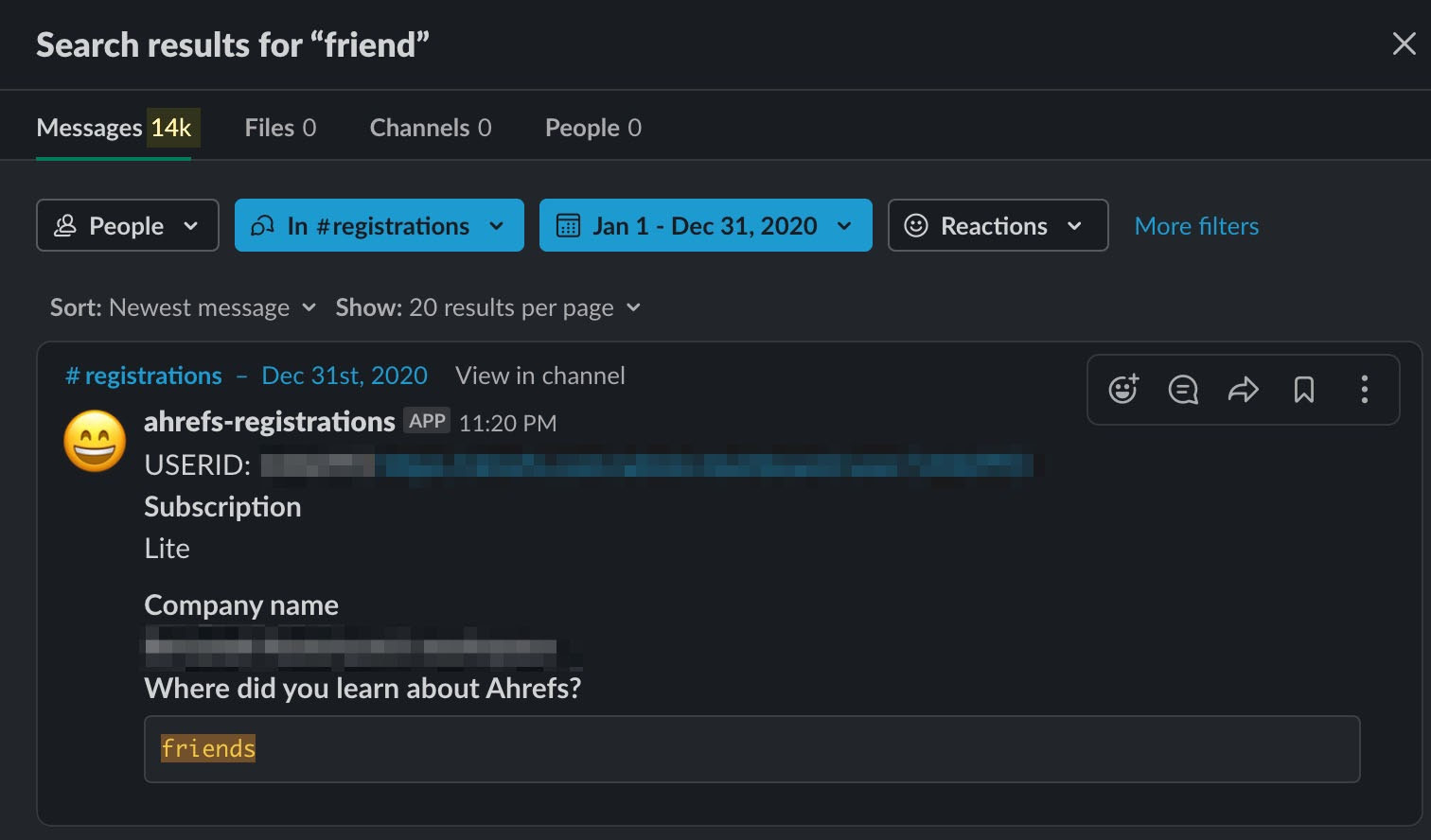
Pros and cons
| Pros | Cons |
|---|---|
| Grows brand awareness and sales without ad spend. | Hard to influence, impossible to control. |
| Builds a community around your brand and product/service. | |
| Positive WOM greatly increases brand equity. |
Podcasting allows brands to connect with audiences through engaging audio content. It’s a platform for storytelling and sharing insights, offering a personal touch that can align closely with listener interests.
Podcasts seem to be a growing channel in terms of audience and ad spend:
- Podcast ad spending in the U.S. is expected to reach $2.56B in 2024, a 16.3 percentage points increase from 2023. (Statista)
- There are more than 850,000 active podcasts today.
Example
Let’s take a quick look at three ways brands use podcasts today.
The first, and probably the most popular way, is being interviewed on a podcast or co-hosting one. The brand and/or the product gets to be featured in a natural way throughout the conversation.
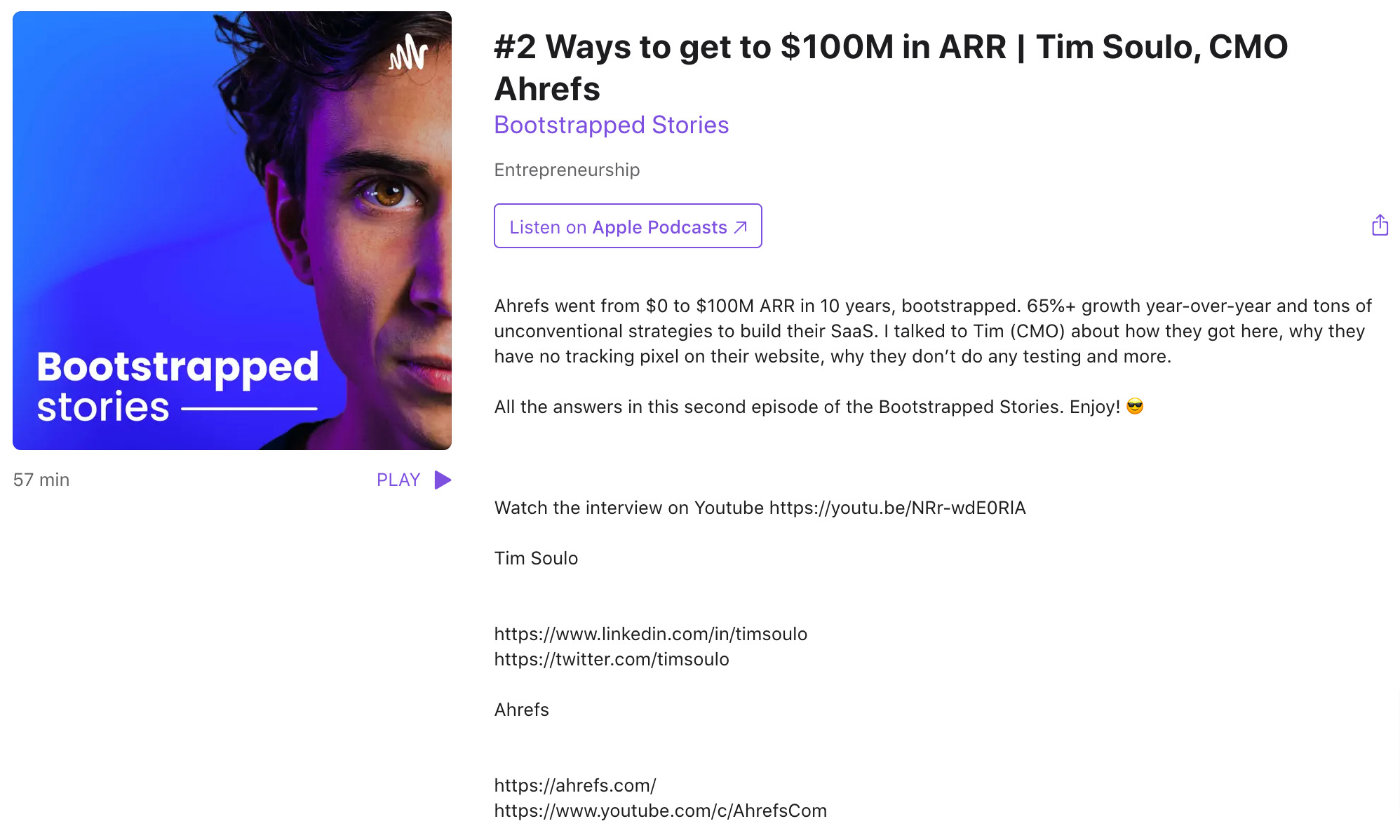
The second way, and also a very popular option, is to sponsor a podcast. The audience gets acquainted with the brand through advertisements inside the podcast and/or brand identification near the content (like in the example below).
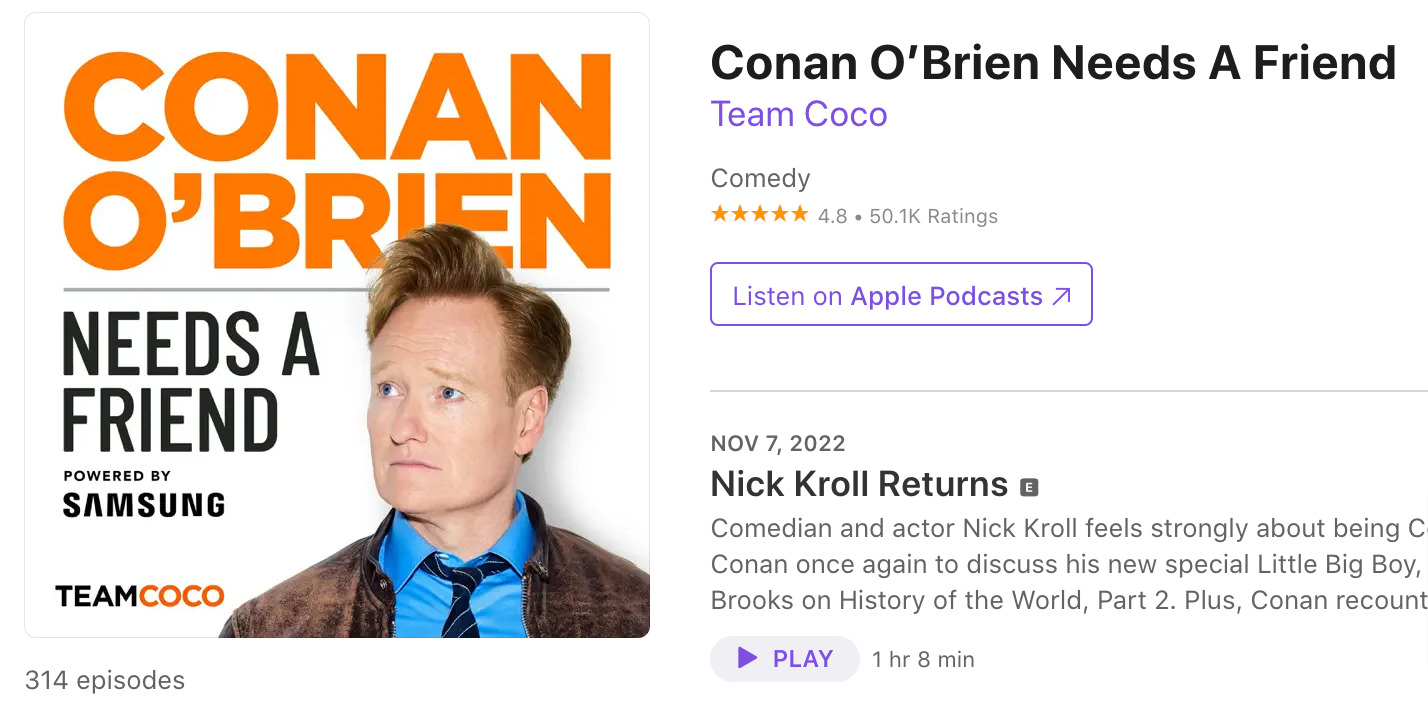
The last way a brand becomes engaged in podcasts is by creating its own series. Products are rarely featured; the focus is on memorable experiences delivered through carefully targeted content. This way, the brand can earn positive associations, differentiate, and give their audience a reason to come back to the website on a regular basis.
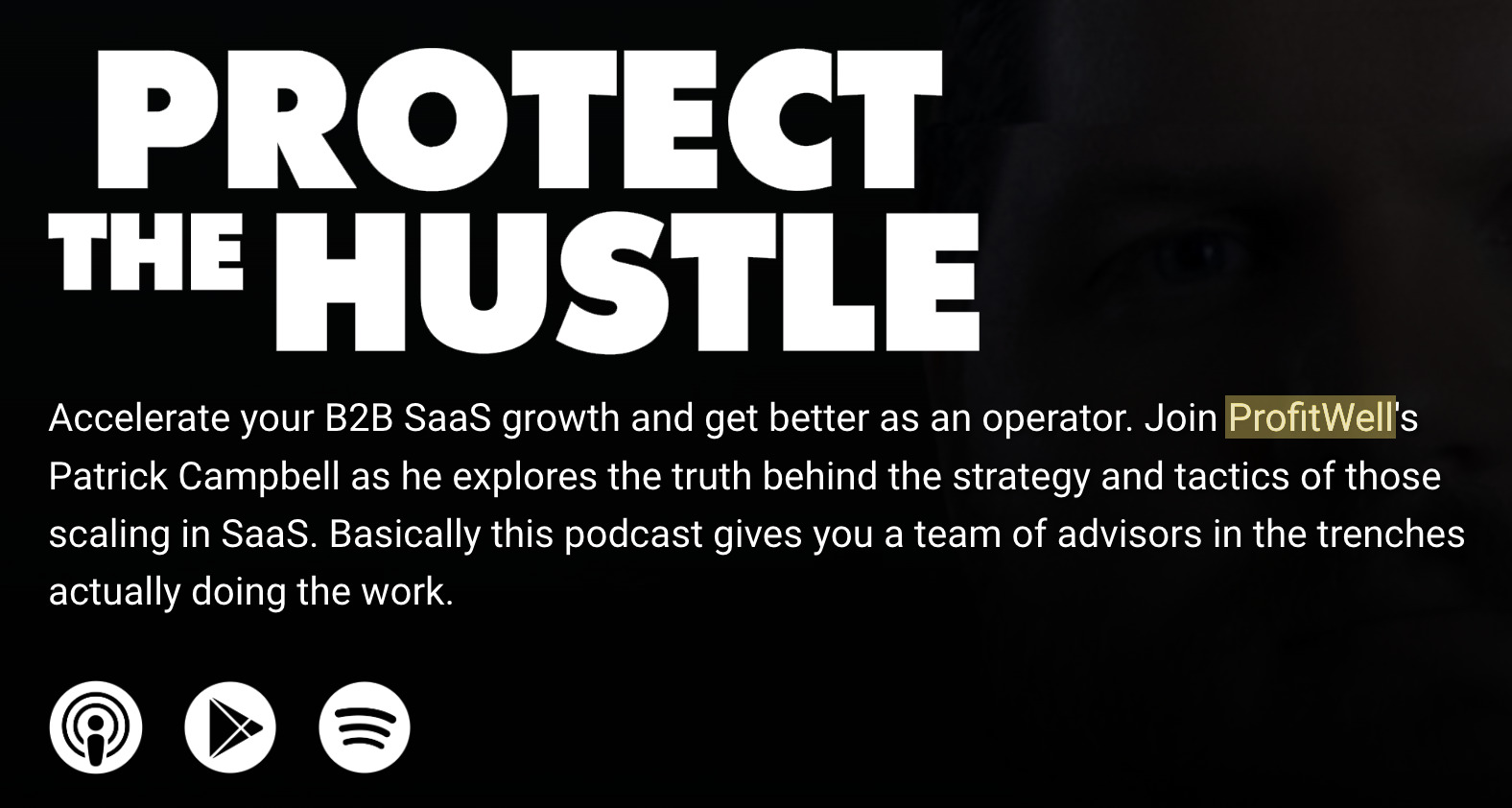
Pros and cons
| Pros | Cons |
|---|---|
| Builds brand awareness. | Limited control over the outcome. |
| Engages your audience and builds credibility. | Can be quite resource-heavy (time, people, money). |
| Builds loyalty and retention. | |
| Can be distributed on multiple platforms. | |
| An opportunity to create multiple content types in one go (e.g., podcast, video, blog post). | |
| Offers quite precise targeting. |
Whereas other marketing channels are used to communicate with the audience, events are more about meeting with the audience.
Event marketing can be done online and offline but also in a hybrid model. However, in-person events allow for evoking stronger emotions and more convenient networking.
But can you rely on the in-person formula only? Probably not. Half of marketers and advertisers predict all future events will have a virtual dimension (MarketingCharts).
Example
Here are the most common types of events used in marketing.
Trade shows are organized around products and technologies. Usually business-oriented, with the goal of networking and generating leads.

Conferences. Organized around ideas or technologies. The focus is on exchanging knowledge, entertainment, and networking. Often have a laid-back atmosphere with a mixed agenda. They are the most “open” of all types.

Seminars and workshops. Focused on exchanging ideas and experiences. Usually smaller in size and organized for a small number of people.

Pros and cons
| Pros | Cons |
|---|---|
| Can raise your company’s profile. | Expensive and resource-heavy. |
| An opportunity for publicity. | Hard to organize. |
| Depending on your industry, can be a valuable source of leads. | |
| Develops deeper relationships with customers and business partners. | |
| Brand exposure in a precisely profiled audience. |
Affiliate marketing is where people promote another company’s product or service in return for a commission on generated sales.
The party promoting the product is called the affiliate, and the brand delivering the product is the merchant. Often, there is also a middleman connecting the parties called the network or program (e.g., ShareASale or GiddyUp).
A commission is typically a percentage of the sale price but can occasionally be a fixed amount.
All those fractional commissions and percentages add up to a huge business. According to Influencer Marketing Hub, this industry is set to grow to approximately $15.7 billion globally by 2024.
Example
This article by Mastering.com lists eight studio setup essentials and links to products using affiliate links.
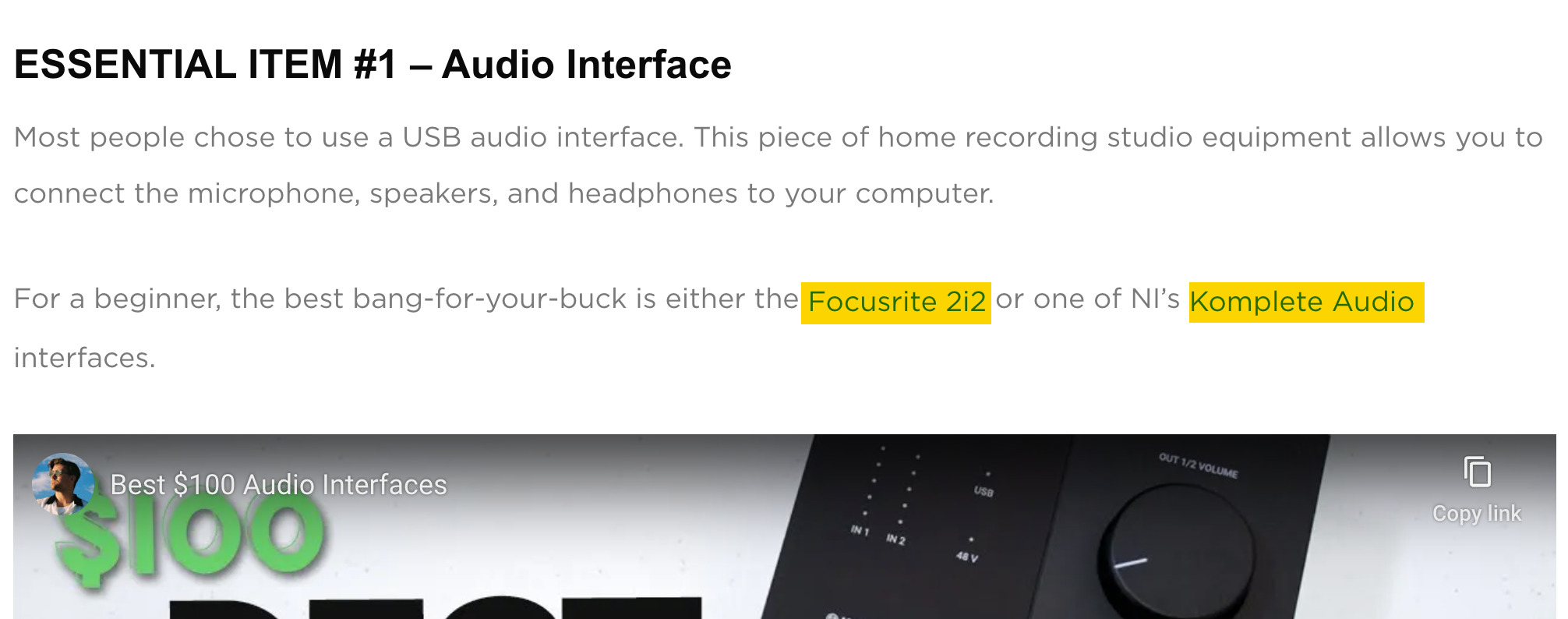
Products mentioned in this one article alone can get a part of that over 10,000 organic traffic (and other traffic sources too).

At its best, affiliate marketing is a win-win for all parties involved, including consumers. Affiliates earn commissions on their work testing products (sometimes) and putting up the content, merchants get exposure to qualified audiences via trusted partners, and consumers don’t need to spend so much time researching products on their own.
Pros and cons
| Pros | Cons |
|---|---|
| Low risk. | Can damage your reputation if you team up with the wrong affiliates. |
| Low entry barrier. | Very little or no control over how affiliates present your product. |
| Based on performance with little to no upfront costs. | Chance of fraud on the affiliates’ end. |
| Affiliate networks make this channel simple to use. | |
| Can be a source of qualified traffic. | |
| Some affiliates actually make the internet a better place, and you get to support them. |
Influencer marketing involves partnering with people who have an active, sizable audience (usually on social media) and the ability to influence their audience in order to promote your brand, products, or services.
Influencers have dedicated followers who often trust their recommendations (72% of Gen Z and Millennials follow influencers), giving the brand a human voice and a relatable face.
Influencer marketing is similar to affiliate marketing in the sense that you also pay someone to create content that will give you access to their audience. But here, you usually work with a handful of carefully selected creators, and you pay on a contract or campaign basis.
That said, some influencers accept other forms of compensation: a giveaway for the audience, a discount on the product, or a free product.
Example
To test this channel, we allocated a month’s advertising budget ($200K) to it.
That budget allowed us to get:
- 72 videos
- 108 podcast episodes
- 138 newsletter issues
- 11 standalone projects and events
- 9 blog articles
- 7 social media campaigns
These numbers refer to small to mid-size influencers with highly relevant audiences. From that point on, we started to regularly invest in this influencer marketing. We also learned that:
You’ll only get the hang of this tactic by diving in and doing it. I mean, your best prospects will probably come through references, which will come to you as you go. Also, a good content creator won’t necessarily make a good partner. You need to do due diligence and invest in those who are willing to invest their time in you.
Pros and cons
| Pros | Cons |
|---|---|
| Direct access to engaged audiences. | Can get expensive quickly. |
| Authentic promotion from trusted personalities. | Risk of association with influencer missteps. |
| Challenges in measuring direct ROI from campaigns. |
Frequently asked questions about marketing channels.
What is the best marketing channel?
It’s very unlikely for a brand, and definitely not optimal, to use just one marketing channel. Brands usually try to be present in as many channels as possible, as this increases reach and convenience to customers.
That said, it’s common to put more weight on one channel or a small set of channels. For example, at Ahrefs, we focus on organic search and video marketing because those channels can serve the entire marketing funnel at the same time.
What’s the difference between multichannel and omnichannel marketing?
Omnichannel marketing is about using all available channels to attract and serve customers, providing a seamless experience. For example, Ikea allows you to purchase products in stores, online, through an app, by phone, etc.
Whereas in multichannel marketing, not all channels are utilized or integrated. For example, I bought a wardrobe online recently, and the shop sent me text messages about the status of the order, but I couldn’t use the same channel to respond.
How are marketing channels different in B2B than in B2C?
B2B and B2C brands invest in the same channels (according to HubSpot). However, the way they use the channels may differ.
B2C brands usually use these channels to offer entertainment and directly impact sales. B2B brands focus more on educating prospects and forming long-lasting relations.
These types of brands may also find some types of content or platforms more suitable for them. For example, B2C brands typically don’t publish case studies, and B2B brands find LinkedIn more effective.
What’s the difference between marketing channels and distribution channels?
Distribution channels are the means by which products or services are made available to a consumer (e.g., directly via a brand’s website or through resellers), whereas marketing channels are the means by which products and services are communicated to the consumer.
Final thoughts
Multichannel marketing and omnichannel marketing seem to be the way to go these days. More channels mean more convenience for your customers, more prospects reached, and more ROI for your company.
To make the best use of your channels, it’s a good idea to keep your brand’s messaging consistent across all media; marketers call it integrated marketing communications.
Got questions? Ping me on X.

